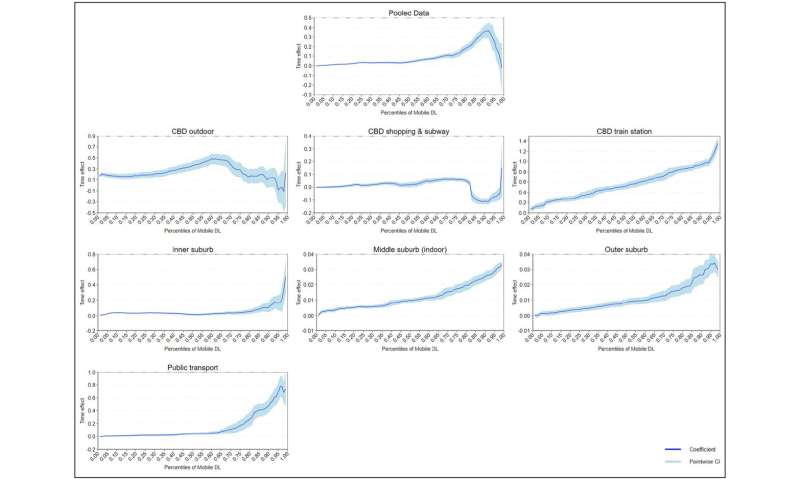Melbourne radio wave exposure consistent over time

Environmental exposure to radio waves from wireless technology has not changed significantly in Melbourne over the last decade, according to a study led by scientists at the Australian Radiation Protection and Nuclear Safety Agency (ARPANSA).
ARPANSA science officer and lead author, Dr. Chhavi Bhatt, says the study, published in Environmental Research, was the first of its kind in Australia.
"We placed a radio wave dosimeter in a bag which we wore around our waist to collect radio wave exposure measurements as we walked around the city," Dr. Bhatt said.
"The measurements we collect through body-worn detectors help us understand what a person's exposure is as they go about their day.
"We collected measurements in 2015, and then retraced our steps at the same 18 walking paths in 2022 to assess if personal exposure had changed," he said.
Environmental exposure remained well below 1% of the safety limits in the ARPANSA radio wave exposure standard with median exposure 0.22% of the limit in 2015 and 0.24% in 2022.
In the period between the baseline and the follow-up data collection, Australia's Bureau of Statistics recorded an increase in Melbourne's population of about 500,000 people. There was also growth in telecommunications services with the introduction of the 5G network and expansion of the 4G network.
ARPANSA's electromagnetic radiation exposure assessment assistant director and study co-author, Dr. Stuart Henderson, says that the public's exposure to radio waves has been shown to be well below the safety limit in a range of studies.
"We receive some calls through our Talk to a Scientist service from people who are concerned about radio wave exposure," Dr. Henderson said.
"What this study shows the community is that even with more devices, transferring more data, exposures have not changed much over time.
"While this study was conducted in Melbourne, we expect the results to be similar in other major Australian capital cities.
"As Australia's primary authority on radiation protection, ARPANSA will continue to study radio wave exposure from wireless technologies to evaluate exposure and protect the community," Dr. Henderson said.
ARPANSA has published a range of radiation exposure surveys and studies on its website.
More information:
Chhavi Raj Bhatt et al, Micro-environmental personal radio-frequency electromagnetic field exposures in Melbourne: A longitudinal trend analysis, Environmental Research (2024). DOI: 10.1016/j.envres.2024.118629
Provided by Australian Radiation Protection and Nuclear Safety Agency (ARPANSA)